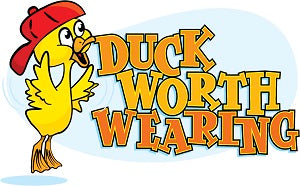
How to Sustainably Rehome Your Clothes: Your Guide to Getting Rid of It!
How to Sustainably Rehome Your Clothes: Your Guide to Getting Rid of It!
It is easy to find yourself with a closet full of things you no longer wear. According to a study conducted by Trunk Club, the average person has 35 items of clothing in their closet but only wears 20 of said pieces. That means the average closet is 43% unworn clothing. So, what should be done with our clothes when we rehome the unworn?
The fashion industry is a huge polluter. 10 million tons of textile waste is sent to landfills each year, according to Beth Porter for Green America. But, there are ways we can keep our old clothes in circulation. Below is a list of some of the options out there and the benefits of each.
Donating
Donating is the act of giving the clothes you no longer use to an establishment that can. These places will sell, give away, or use the items they obtain, and most often than not, there’s a good cause behind their operations.
-
Thrift Stores
-
Thrift stores are places that take donations for items to sell. Generally, these places are run by nonprofit organizations or churches who fund local and global charities (Think Salvation Army). Thrift stores can also be for profit (Think Goodwill).
-
Pantries/Closets/Shelters
-
Many communities have clothing pantries/closets that you can donate to. These places, instead of selling it, give clothing to people in need. Many run off of volunteer work and give back to their local communities. There are also homeless and women’s shelters that could benefit from clothing donations.
Pros: There is not much effort required on your part to donate. All you need to do is pack up what you wish to get rid of and bring it to their facility. They will handle the rest. In most cases, you are doing good and giving to worthy causes/those in need.
Cons: You are giving your clothing away for free. You won’t get anything back from donating (other than personal satisfaction and possibly a very minimal tax write off) even if you paid a lot for it originally. Large thrift stores have also been criticized for some not-so-great practices, so you may have to do some research to make sure your values align with who you’re donating to.
Consigning
Consignment is when you take your old clothes to a store that will sell them and give you a percentage of the profit when it sells. Oftentimes, consignment stores have certain criteria for what they’re willing to accept, opposed to thrift stores that may take anything you give them.
-
Brick-and-Mortar
-
Many consignment shops are local, brick-and-mortar stores that serve the area they’re located in. They take consignment and sell to those in their community. (Think The Loft Resale, Duck Worth Wearing) Some, like The Loft Resale, may also have an online store.
-
Online
-
Online consignment stores will let consignors send items to their warehouses for them to sell on a website. (Think Thredup, The RealReal) They will upload photos and descriptions for each of your items they accept. You may have to pay a shipping or return fee.
Pros: Consigning is generally low-effort like donating, although you will need to make sure your clothing meets the criteria of where you’re consigning. Most consignment stores want items in good condition and may ask for specific styles. You can usually use the money you make as in-store credit, too!
Cons: You won’t get money for your clothes right away. You’ll have to wait for the items to sell. Sometimes not everything you bring in will sell, which means depending on the store policy you will need to come pick your unsold items up or they may be donated.
Buyout
Buyout stores are like consignment but instead of getting money when the item sells, they give sellers their money right after taking the items, essentially buying them from you. (Think Plato’s Closet, Style Encore)
Pros: You get money right away, which is great if you’re low on cash! You also won’t have to worry if your clothes don’t sell, because they aren’t yours to deal with anymore.
Cons: There are some downsides to getting money upfront, though. Stores need to make a return on their investment, and in order to do that they may take less and/or pay you less for your items. It depends on what the buyer thinks will sell and how much they can sell it for. The goal for them is to make more money than what they paid you.
Selling
Another option is to sell your clothes yourself. There are a number of different ways this can be done.
-
Locally
-
You can sell your clothes locally by listing them on buy and sell sites, such as Facebook Marketplace. Garage and yard sales are another way to get the job done.
-
Online
-
There are numerous online selling platforms, such as Poshmark and Mercari, where you can sell things to people across the country. You can create a listing with pictures and a description, just like an online store.
Pros: Selling your items directly means you could make more money from them. Online selling platforms take a smaller cut than consignment stores. You’ll also be in control of how much the item is sold for and all other details.
Cons: Selling things on your own can be a lot of work. Some people do it as a full-time job! You’re responsible for taking pictures of and describing your clothes along with interacting with those who want to buy. It can be a frustrating, time consuming process. Plus, you will have to find a place to keep the items you don’t want until they sell.
No matter which option sounds most appealing to you, they all help keep our clothes in circulation, thus stopping waste in its tracks. Hopefully this guide can help you decide which is best for you! Stay tuned for more information on all things consignment and sustainability!
For more information on these topics:
Americans Can Never Find Something to Wear, Study Finds
The Best Online Consignment Stores of 2022
What Really Happens to Unwanted Clothes?
Written by Gabryelle M Watkins

